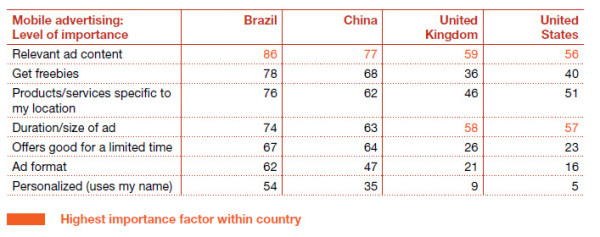Omni-Channel & Mobile-Focused Marketing Aren’t Mutually Exclusive, Stupid
Okay, so the title’s not as catchy as James Carville’s famous rallying cry or even Aaron Strout’s recent usage of it on Marketing Land last week. And I don’t think Mr. Strout — or anyone who holds the opinion that mobile-focused marketing is only possible at the expense of having a good user experience across all […]
Okay, so the title’s not as catchy as James Carville’s famous rallying cry or even Aaron Strout’s recent usage of it on Marketing Land last week. And I don’t think Mr. Strout — or anyone who holds the opinion that mobile-focused marketing is only possible at the expense of having a good user experience across all platforms — is stupid.
But I do take exception with the unfortunate trend of claiming that focusing on a mobile context is somehow a thing of the past simply because users are accessing the web from a number of different devices.
Yes, we must stop assuming that mobile users need one thing and desktop users need another, and we must provide more adaptive content that works for users of all platforms.
But that doesn’t mean we can’t create the best user experience ever if we not only provide that content that users of any platform find useful, but also content that responds to a user’s known mobile context and gives them what they likely need.
Context, Context, Context
Consider this subway ad, which so many people have found compelling that it’s recently gone viral. Yes, you heard that right: a subway ad that has gone viral.
[vimeo]http://vimeo.com/87648696[/vimeo]
In the ad, a young woman has her long hair blown, along with commuters on the platform, just as the train goes by. It’s such a compelling ad that people stop and show their friends — they are actually engaged with the content.
The ad is engaging because it responds to context. It is more responsive than responsive design in that it understands the user’s context and presents content to them that responds to that context. Most omni-channel marketing (including responsive web design) presents the same content in every environment, but this ad shows what happens when you go above and beyond that and provide a jaw-dropping user experience that responds to context.
And, mobile users want this. According to a recent PricewaterhouseCoopers study, the most important characteristic of mobile advertising to Brazilian, Chinese, British and American users is relevance:

Today, some marketers are making their content more relevant by responding to known elements of a mobile context. It’s true, Josh Clark (and all you other young designers, developers, content strategists and marketers who are making a name for yourselves with responsive web design) — not all mobile users are in a hurry, and device location is mostly at home.
Some Types of Content Were Made For Mobile
But there are types of content that make more sense on mobile (and in some cases can’t exist in other contexts), like mobile coupons, location aware alerts, indoor maps, barcode scanners, etc. Companies like Google, Lowe’s, Target and Sears aren’t using these technologies because they’re stupid, and the suggestion would be pretty offensive to them, I’m sure.

And will you One Web pundits please stop claiming that you know the future and that responsive web design and omni-channel marketing, as they exist today, are a part of it?
If you knew the future, you would probably be at the race track, not trying to make money selling responsive web design and omni-channel marketing. Besides, your efforts aren’t really paying off — responsive web design is not really taking off in the present, and most IT managers aren’t convinced that the responsive solution is a long term, future-friendly one.
Look, I understand where champions for omni-channel marketing, adaptive content and responsive design are coming from. I really do! The old practice of limiting content to users on a certain platform was well-intentioned, but in many cases provided a poor user experience when someone couldn’t access content that they wanted to just because they were on a certain platform.
Don’t Throw The Baby Out With The Bathwater
It’s very tempting to shout at these people and disparage mobile-focused marketing and design until they change their ways — but you need to be careful that you don’t throw out the good with the bad, as it could cost you users, and ultimately revenue.
I do hope those who think mobile-focused marketing is stupid will consider this. I’m encouraged by the fact that Mr. Strout has changed his mind about QR codes in the past, having since amended his position in a recent article on Marketing Land — even mentioning them, oddly, as being possible in an omni-channel marketing campaign.
Mobile-focused marketing, like the QR code, doesn’t have to be mutually exclusive with omni-channel marketing, and really isn’t cause for name-calling when it’s done right.
Contributing authors are invited to create content for MarTech and are chosen for their expertise and contribution to the search community. Our contributors work under the oversight of the editorial staff and contributions are checked for quality and relevance to our readers. MarTech is owned by Semrush. Contributor was not asked to make any direct or indirect mentions of Semrush. The opinions they express are their own.
Related stories